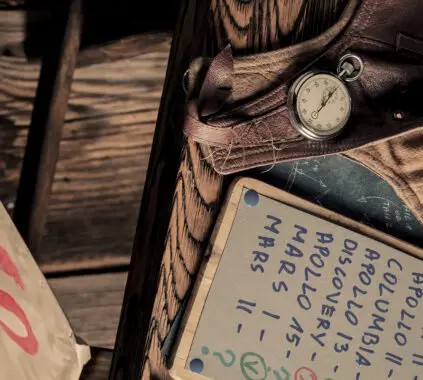The Scene: An open mind but a closed door
You’re standing in a grand, old library—the kind with soaring bookshelves, velvet chairs, and a single candle flickering on your desk. Across from you sits a student, wide-eyed, waiting for wisdom.
“What should I do?” they ask.
And here’s where most leaders make their mistake.
They always answer.
Not because they’re wrong. But because they’ve trained themselves to be the source of all solutions—rather than the guide to discovering them.
A truly great mentor and leader doesn’t just give answers. There are times where a direct answer is needed. But real leaders know the difference and can spot opportunities for their people to find the answers themselves.
And that is the difference between a team that follows instructions and a team that creates solutions.
The Shift: From Problem-Solver to Thought-Builder
Most leaders think their job is to provide solutions.
But real leadership is about developing people—not just directing them.
If your team always relies on you for the “right” answer, they never develop confidence in their own thinking.
If they’re afraid to make mistakes, they’ll never take creative risks.
If you always guide them step by step, they’ll never learn to navigate ambiguity.
The Fix: Shift from Giving Answers to Guiding Thought
- Instead of solving the problem for them, guide them through it.
- Instead of saying “Here’s what to do,” ask “What do you think?”
- Instead of removing uncertainty, train them to get comfortable in it.
Because the best teams aren’t just well-managed—they’re independent, creative thinkers.
The Experiment: 3 Ways to Lead Without Micromanaging
1.Step 1: The Art of the “What Do You Think?” Pause
When a team member asks, “What should we do?”
Pause.
Because that’s the moment where the real learning happens.
Try This Exercise: Instead of answering, ask:
“What do you think?”
“I noticed in XYX situation you did {insert response that empowers them], do you feel like you could handle this same situation the similarly?”
“I would love to hear your perspective on what you think should be done. I know you are asking me, but there are many ways to get to same destination, and brainstorming ensures we get to the right answer not the first one.”
At first, they’ll hesitate—because they’re used to being directed, not empowered. But over time?
They’ll start anticipating that question.
They’ll start thinking critically before asking.
They’ll start trusting their own instincts.
They’ll start feeling valued for their experience and insight.
2. 2: Training for the Unknown (Like a Hero in a Story)
Every great hero in a story faces a moment of ambiguity—a puzzle they don’t immediately know how to solve.
Creativity works the same way.
The best ideas don’t come from following instructions.
They come from navigating the unknown.
Try This Exercise: Next time your team is stuck, instead of handing them a solution, introduce a creative constraint that forces them to think differently.
Example: If they’re struggling with a branding concept…
Remove a key resource. (“What if we had no budget—how would we execute this campaign?”)
Add a storytelling twist. (“You can only explain this brand using a fable or fairy tale.”)
Why This Works:
It unlocks lateral thinking.
It removes the fear of a “wrong” answer.
It builds creative confidence—so they trust their instincts.
3. Make “Bad Ideas” the Starting Point (Not the End)
Here’s a paradox:
The best creative breakthroughs often start as terrible ideas.
But most teams don’t feel safe enough to share those ideas—so they self-edit before the real magic happens.
Try This Exercise: The 5-Minute Brainstorm Rule
Next time your team is brainstorming, tell them:
“For the next 5 minutes, we’re only coming up with bad ideas.”
Why?
Because bad ideas are often the seeds of great ones.
Because removing the pressure of perfection allows creativity to flow.
Because a team that plays with ideas discovers solutions instead of just seeking them.
Try it.
Watch as the ideas start bad… then suddenly spark brilliance.
The Final Lesson: Lead Like a Guide, Not a Gatekeeper
The best leaders don’t just provide direction—they build thinkers.
- They challenge people to trust their instincts.
- They create an environment where ambiguity isn’t scary.
- They make sure their teams feel safe enough to take creative risks.
Because at the end of the day?
Your job isn’t just to lead projects. It’s to develop people who don’t need you to think for them.
– Lauren Janeen
And when you do that, you don’t just build great work. You build great creative minds.
Your Challenge This Week
- Next time someone asks you for an answer, pause. Then ask: “What do you think?”
- Notice how your team (or yourself) reacts when faced with ambiguity.








